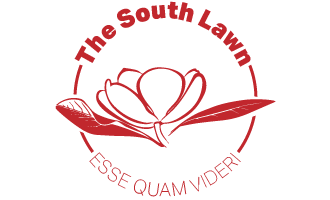The concept of privilege — whereby one gains certain benefits due to their membership in a sociological group that has a measure of power — is one that has been hard to talk about in recent years. Too often, the concept has been hijacked by those who use it to shut down discussion and tar people that they find disagreement with. Even when it is not being used to that effect, you can peruse sites like Identities.Mic and see the most base and childish discussions of power and privilege imaginable. Take this article by Derrick Clifton, which assumes that no one cares about the bombing of a NAACP office in Colorado because it is not wall-to-wall coverage….on the same day that a shooting kills twelve people at a newspaper office.
Given the aforementioned example of the simplemindedness that accompanies many online discussions of privilege and power, it is somewhat understandable that leftists have avoided a discussion on privilege when it comes to Charlie Hebdo and the shooting that killed 12 of its writing staff. Many of the debates have centered around issues of free speech, the possibly bigoted nature of some of its attempts at satire, and whether satire should be given wide berth to offend in the pursuit of making people think. These topics seem actionable to a degree, and offer a measure of possibility when it comes to political action. Because contemporary discussions of privilege are so badly broken and given to unsightly episodes of social justice performance, it seems that it would be for the better to just ignore the discussion altogether.
But without the consideration of privilege and power, any conversation about this situation will be incomplete.
—
In a post that has been widely shared amongst the American left, Arthur Goldhammer writes in Al Jazeera America:
There is an old Parisian tradition of cheeky humor that respects nothing and no one. The French even have a word for it: “gouaille.” Think of obscene images of Marie-Antoinette and other royals, of priests in flagrante delicto with nuns, of devils farting in the pope’s face and Daumier’s caricatures of King Louis-Philippe, whom he portrayed in the shape of a pear. It’s an anarchic populist form of obscenity that aims to cut down anything that would erect itself as venerable, sacred or powerful. Such satirical humor has little in common with the kind of witty political satire with which Americans are familiar today through watching Jon Stewart or John Oliver.
This seems like an ideal for political satire, right? Nothing should be spared in our quest to hold up the ridiculous in our society for all to see, with the hope being that people might consider issues a little more carefully and work for social change. Everyone cannot read Marx or get through a policy briefing, so we use a time-honored medium to make people laugh in addition to considering the disconnect between the rulers and the ruled. William Magear “Boss” Tweed, who was boss of the New York Irish Democratic political machine Tammany Hall in the late 19th century, was constantly ridiculed by Harper’s Weekly cartoonist Thomas Nast. A remark that gave in frustration revealed the ability of images to challenge structural power:
Stop them damned pictures. I don’t care so much what the papers say about me. My constituents don’t know how to read, but they can’t help seeing them damned pictures!
But here’s the issue with Goldhammer’s analysis: it lacks a discussion of power and privilege. Otherwise, he might be able to see the difference between lampooning the Catholic Church — an organization that enjoys support from a strong majority of the French and makes up an important political constituency in both the UMP and Parti Socialiste — and doing the same to a community who was once derided by then-Interior Minister Nicolas Sarkozy as racaille, which translates roughly to “scum”. Sarkozy’s comment was made in the aftermath of rioting in what are known as the banlieues — suburban areas that are punctuated by poor standards of living, degradation of public services, and largely Muslim immigrants from francophone West African countries. Considering this might be baffling, of course, if any of you remember the reaction that was provoked when the Columbia (Mo.) Tribune did the same thing shortly after the murder of Michael Brown in Ferguson, MO. The outrage against the racism present in that cartoon seems to be missing in the discussion about Charlie Hebdo’s legacy.
Part of that has to do with the specter of censorship that many believe to be hanging over the reaction to these events. There are few parts of our world where leftist speech has not been circumscribed and subject to brutal punishment at some point in history, and the fear that the response to Charlie Hebdo — a magazine that identified with radical elements of the French left — might be to curtail speech in the name of “civility” or “decency” is understandably frightening.
But there has to be balance: some things do not need to, in the words of Voltaire, have their right to be spoken defended to the death. And if we believe in the power of movement and human progress, there has to be a stronger level of condemnation for bilious and revolting displays of racism. Not, “racism is bad, but…”, but a discussion that keeps in mind that social progress will not happen without bringing all of the elements of our coalition to bear; that includes Muslim and immigrant members of the working class.
